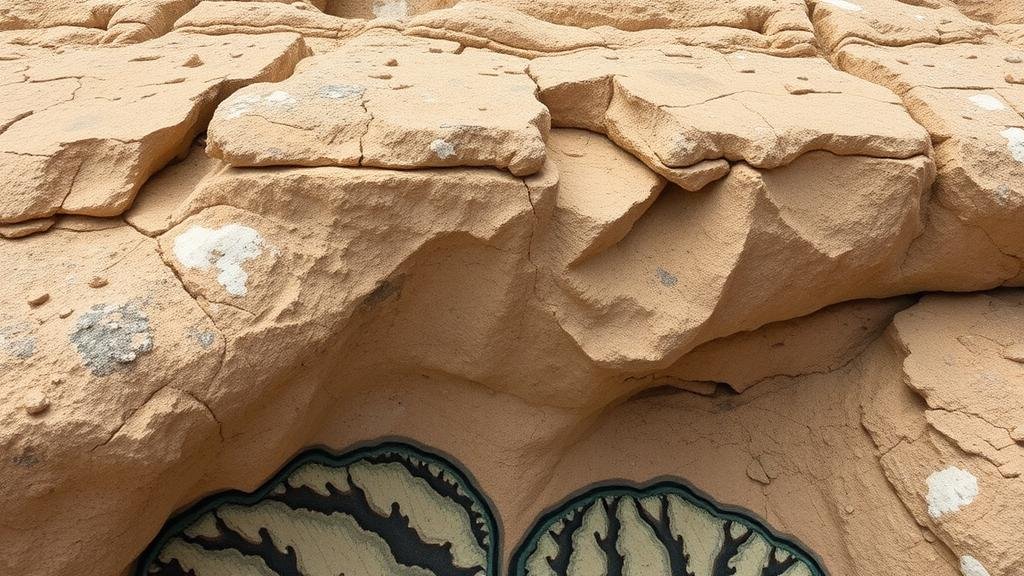Investigating fossilized coral reefs in the limestone outcrops near the Caballo Mountains.
Investigating Fossilized Coral Reefs in the Limestone Outcrops Near the Caballo Mountains
The Caballo Mountains, located in Sierra County, New Mexico, are not only a stunning geographic feature, but they also provide an extraordinary opportunity for rockhounds and mineral collectors to explore fossilized coral reefs embedded in limestone outcrops. These ancient corals offer a unique glimpse into the Earths geological past and the evolution of marine life. This article will delve into the significance of these fossilized coral reefs, the geology of the area, and practical tips for collectors interested in examining these natural wonders.
The Significance of Fossilized Coral Reefs
Fossilized coral reefs serve as critical indicators of historical biodiversity and environmental changes. provide evidence of the types of marine life that existed millions of years ago, which is invaluable for understanding ecological shifts over time. In particular, coral reefs can be dated back to the Paleozoic and Mesozoic eras, with some formations being over 300 million years old.
A study published in the Geological Society of America Bulletin highlighted that these reefs can indicate past ocean temperatures and chemical compositions, offering insight into climate change throughout history. This type of research is crucial as scientists attempt to correlate ancient data to current global climate issues.
Geology of the Caballo Mountains
The Caballo Mountains are primarily composed of volcanic rocks, sedimentary deposits, and significant limestone outcrops, which contain fossilized marine organisms. limestone formations here were primarily formed during the Mississippian and Pennsylvanian periods, where shallow marine environments thrived.
The prominent limestone layers in this region typically exhibit a variety of fossilized corals, including:
- Favosites: Colonies that resemble honeycomb structures, known for their robust build.
- Solenopora: Featured by its fine, millimeter-wide tubes with characteristic branching.
Each type of fossilized coral can be pinpointed to specific environmental conditions during its growth, providing clues about the paleoecology of the region.
For those interested in rockhounding, the Caballo Mountains present a rich field of exploration. Here are some methods and techniques that collectors can employ:
- Preparation: Equip yourself with a geological hammer, chisels, safety goggles, and sturdy gloves. Always have a collection bag to transport your finds.
- Research: Before visiting, familiarize yourself with local geology and fossil identification. Use maps to identify promising limestone outcrops.
- Field Techniques: When onsite, look for weathered surfaces of limestone where fossils may be more visible. Gently chisel away loose material to expose fossilized corals without damaging them.
- Documentation: Take photographs and notes of your finds, including the specific location and the type of coral gathered. Such documentation can enhance the collections value and inform further research.
Real-World Applications
Fossilized corals not only enrich collectors repositories but are also utilized in various scientific fields. For example, paleontologists study these specimens to reconstruct ancient environments, while geologists analyze coral content to better understand sedimentary processes. Also, amateur collectors can contribute to citizen science initiatives by reporting their findings to museums or universities.
Conclusion
The limestone outcrops near the Caballo Mountains are a geological treasure trove for rockhounds and mineral collectors. By investigating fossilized coral reefs, one can gain a deeper appreciation for the history of our planet and its complex ecosystems. With proper knowledge, tools, and ethical collecting practices, enthusiasts can contribute significant data to the scientific community while enjoying their passion. Remember to always adhere to local laws and regulations regarding fossil collection, ensuring that these natural wonders are preserved for future generations.



